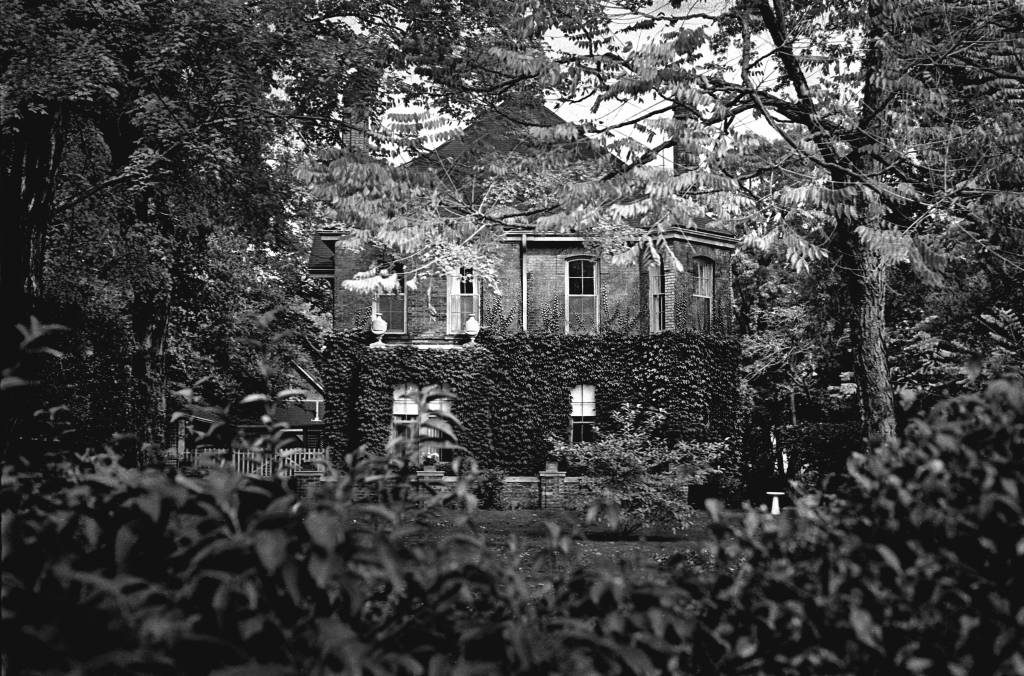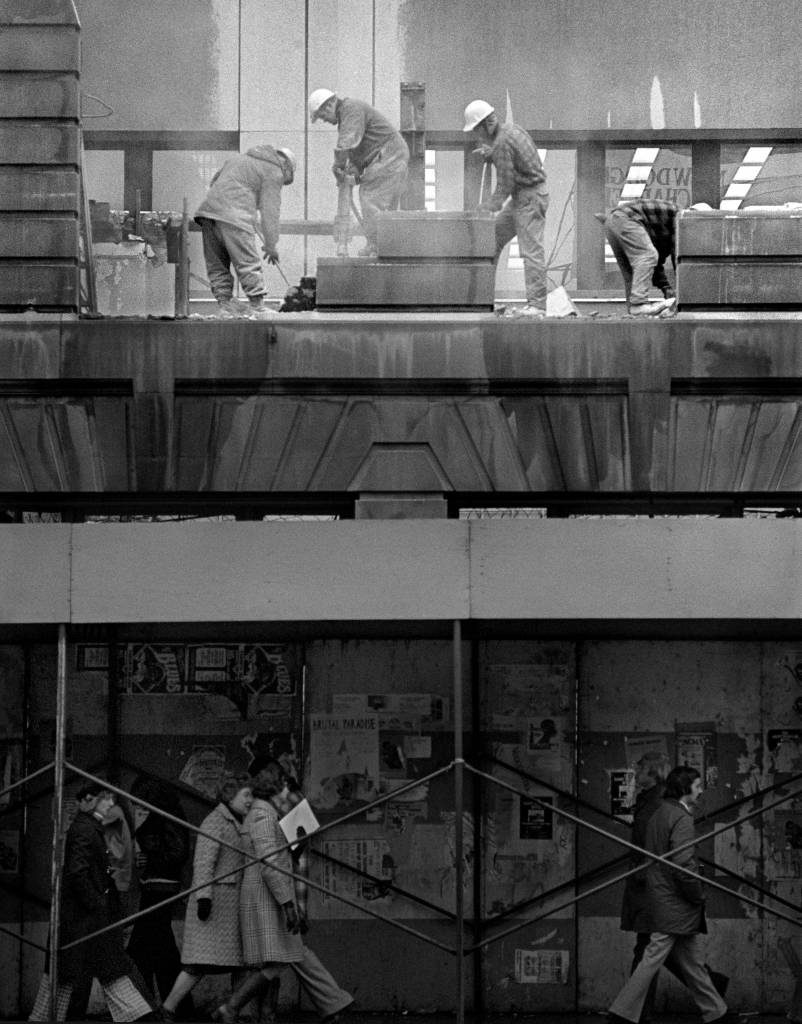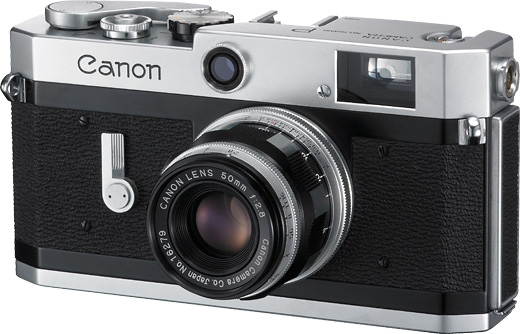When the Canon EOS RP was announced a couple of weeks ago there ensued a discussion on the meaning of “P”. Leica fans and some others felt that P should always stand for “professional” while Canon explicitly stated that the P in RP was for “popular”. Quite the opposite, it would seem. Yet Canon and P-for-popular have a long history. A history I know from my own experience.
Leica lenses
In 1971 I purchased my second interchangeable lens camera. My previous model had been a Praktica SLR, a decent enough camera for a student, but the
I went to a long-since-defunct local camera store and told the counter clerk that I wanted something durable that took decent lenses. Of course, he suggested a Leica M4. But that was completely beyond my modest budget at the time.
Then he suggested a smallish Canon that had been left as a trade-in on an SLR. I liked the size and the solid feel of the Canon and when he told me that I could put Leica lenses on it, I was sold. That camera was a Canon-P and it became my constant companion for the next five years.

Not M
Of course I soon found out that the Leica lenses that would fit on the Canon were not the same lenses that would fit on the M4, but that was of no consequence since I couldn’t afford Leica lenses anyway, and as it turned out the Canon rangefinder lenses I ended up owning were excellent.

The Canon-P was a very basic Leica thread-mount rangefinder, with frame lines for 35, 50 and 100mm lenses. Those frame lines always showed in the viewfinder, so you had to remember which lens you were using.
This wasn’t a problem for me since I only ever had the 50mm f/1.8 and 100mm f/3.5 — both excellent lenses. The two pictures in this article were taken with that camera and those lenses. Sorry, but in those days I didn’t keep track of shutter speed and aperture information.
What I can tell you is that they were both taken on Tri-X rated at ASA 325 (remember that pre-ISO term?) and processed in Microdol, a great developer for fine grain, particularly on Tri-X.
Popular
In common with all Canon film cameras, the P (for popular) had a swing-out film door, and a fairly conventional layout. The most unusual feature was a horizontally travelling shutter curtain made from very thin stainless steel that had been treated somehow to blacken it. If you are familiar with the Canon F1 then you have seen that same shutter material used there. That shutter had one major advantage and one major disadvantage.
First the pro — you could leave the camera lying face-up on a sunny day and nothing would happen to it. Don’t ever do this with a film Leica as the sun will soon burn a hole through the shutter curtain. The con was the very audible “clack” made by the camera when that shutter was tripped. I guess, even though the metal was very thin, it still had

Regrets
That little Canon-P stayed with me for the next five years until I graduated, found a job and spent my first paycheque — well perhaps not the first — on a Canon SLR, using the little Canon-P as a trade-in. That’s a decision I eventually came to regret. It was a simple but tough and excellent little camera. I was not gentle with it, but it never let me down.

Here’s my bottom-loading Leica-like Canon ‘Model II-S’ (..it says underneath, inside the film compartment..) but – as a copy of the Leica III – it has a horizontal cloth shutter ..and flash-sync at what appears to be about a very slow 1/20th of a second!
The technology in the Canon II far exceeds that of the similar Leica III, as there’s only ONE finder to look through, instead of the separate rangefinder and VIEWfinder windows on the Leicas. The Canon also has THREE magnifications in its viewfinder: ‘F’ (or ‘Full’) reduced-size viewing to show the whole scene as seen by a 50mm lens, plus ‘1x’ (life-size) magnification and ‘1.5x’ magnification, for critical focusing.
It’s rather heavier than a similar Leica III, and really solidly built. (Wikipedia says that its take-up spool is easier to use than the Leica version, but I have no problem with the Leica version, and find the spring on the Canon version rather too tight for easy threading.)
The take-up/wind-on knob has a very handy ASA film-speed reminder built in (which goes all the way up to 200 from 10 ASA!), which can also be easily set to ‘Empty’ so that you know that there’s no film inside.
The shutter makes a rather loud, hollow “p-clonkk!” (at slow shutter speeds) or “clonkk!” at faster speeds, and 1/200th seems to give the quietest result (..something to do with the travel of, or the gap between, the two shutter curtains).
As for the ‘P’ on the new Canon RP, it’s much more ‘Professional’ than the straight, more expensive, ‘R’ version, as it has a proper mode dial with P A S M and C1 C2 C3 ‘Cherished’ or ‘Customer’ or ‘Custom’ settings easily visible and easily chosen, whereas the straight ‘R’ has no such thing, but has – instead – a daft battery-powered liquid-crystal display to show those settings, and an unmarked dial to change between them – but only after you’ve had to press an extra ‘Mode’ button!
[..Though, as mentioned elsewhere, the ‘R’ is better for silent shooting, as the ‘RP’ provides it only in an ‘automatic’ Scene mode, in which you can’t set either the shutter speed nor the aperture!]
The Canon (originally ‘Kwanon’) Leica-lookalikes are very solidly made, very reliable, with great longevity, and the lenses (originally Nikkor, until Kwanon began making their own, as the Nikkor people decided to create their own ‘Nikon’ cameras) are great, too. The large aperture 100mm screw-thread lenses work great on Leicas, as do the minuscule 50mm lenses ..even on M-mount Leicas by using a screw-to-M adaptor ring.
Canon were really way ahead of Leica till the M3 came out in 1954.
Glad the hear there’s at least on other Canon RF owner out there. I agree about how far ahead Canon was. The “P” had everything the Leica M4 had, except for automatically selected framelines. I’ve owned both cameras and I’d say the Canon gave nothing up to the Leica, except those framelines, the ability to use the bayonet mount, and of course the LOUD shutter. Combine that with the price of the Canon being less than half that of an M4 and it was a winning combination. It’s a wonder to me that I don’t seem more of them, but I suppose being cheaper they were seen as more disposable than a Leica, hence the Leicas are still around and the Canons are long gone.